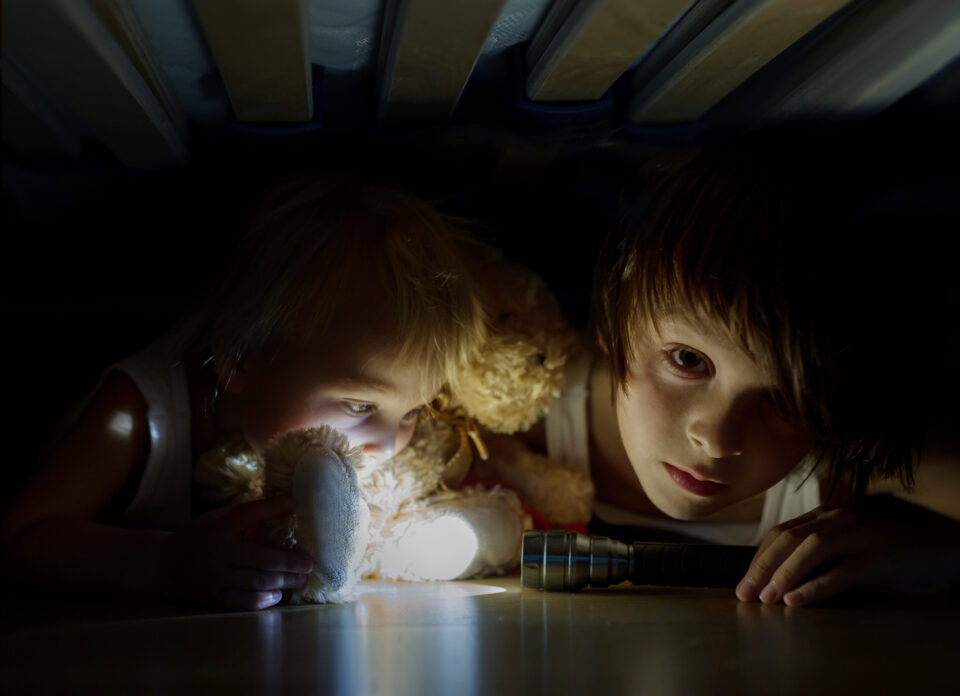
Parenting Corner: Helping your younger child express and cope with their fears.
October 10, 2020
Along with temperatures below 90 degrees, the month of October brings the fun and excitement of Halloween.

While 2020 festivities may be more limited than in years past, for many young children Halloween decorations and costumes can be alarming as well as thrilling.
Halloween aside, for the first time, a parent may notice a young child verbalizing fears about specific things. Common toddler and preschooler fears include animals, dark rooms, imaginary creatures, and being separated from their parents. Certain fears appear to be innate, such as a fear of falling; others result from a specific experience, such as slipping in the bathtub and sliding under water. Sometimes adults unwittingly pass on a fear by having a strong emotional reaction in front of the child (screaming at the sight of a mouse, for example).
Fears are a normal part of childhood. Here are ways to help young children cope:
- Reassure your child and allow them to express their fears.
Providing comfort and reassurance is important since a distressed child cannot immediately respond to reasoning. Ask a child (if they are verbal) what is making them feel afraid and help them understand they are safe. If a child is too young to say what they are feeling, simply describe their reaction: “You heard a loud sound when that balloon popped and it scared you.” Be calm and matter of fact. Do not laugh at or be dismissive of their feelings by telling them “big girls/boys” aren’t afraid.
- Avoid unnecessary exposure to disturbing events and images.
Monitor media entertainment and make sure it is age-appropriate, especially if there are older children in the home. Limit news coverage, even if you think it goes over their head. Graphic images can be deeply unsettling and confusing to children.
- Let children deal with their fears at their own pace.
Encourage attempts to cope without pushing too hard or being overprotective. For example, a child who is afraid of dogs shouldn’t be forced to pet a dog. Instead, a parent could pet the dog and talk to the child in a calm voice while they are standing nearby.
- Establish routines to quell fears.
 Having a routine is helpful to your child learning that pleasure outweighs a fear. For instance, if your child is fearful of falling asleep, having a pleasant bedtime regimen can help them relax. The goal is for your child to manage a fear with your support.
Having a routine is helpful to your child learning that pleasure outweighs a fear. For instance, if your child is fearful of falling asleep, having a pleasant bedtime regimen can help them relax. The goal is for your child to manage a fear with your support.
- Help children devise their own coping strategies.
Instead of shielding them from a situation (or forcing them into it), allow your child to take some control. This gives them a sense of confidence, and small steps may be effective to mastery. Try role play like playing with a doctor’s kit and giving “shots” to Mom or Dad to help manage the anxiety of a doctor’s visit. Engaging in problem-solving together shows a child that a parent takes their concerns seriously without “rescuing” them and inadvertently creating more fear.
- Talk about their concern before it arises.
By broaching a feared scenario before it occurs, you engage your child’s thinking brain while they are in a calm state. This allows them to ideally come up with ideas of their own to curb their fears. Ask questions such as: “What could you do if you heard a scary noise,” or “What could you do if you got separated from me at the store?” This practice will help them identify strategies and learn that there are manageable ways to handle the unexpected when they have a trusted adult on their side.
 Lisa Phillips, MSW, LMSW, has been a parent educator at The Parenting Center at Children’s Hospital since 2001, and is a contributor to the award-winning “Parenting Corner” column. She can be reached at 504.896.9591; chnola.org/parentingcenter.
Lisa Phillips, MSW, LMSW, has been a parent educator at The Parenting Center at Children’s Hospital since 2001, and is a contributor to the award-winning “Parenting Corner” column. She can be reached at 504.896.9591; chnola.org/parentingcenter.

